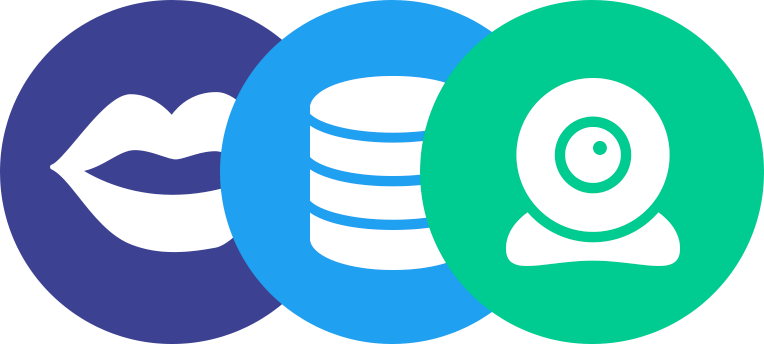Making a social media app is rewarding but complicated. With billions of active users around the world, it’s no wonder so many business owners and developers want to make a social networking app different from others in today’s busy market. But the real question remains: how does one create a fun-to-use social media app that will also make money? Here’s a practical guide on what to consider, from core features to monetization, and the estimated cost of social media app development. If you’re serious about this journey, check out this complete guide on how to create a social media app.
Content:
Steps to Build a Social Media App
Building a social media app begins with good planning and knowledge of the target audience. Let’s go through the steps to build a successful platform:
1. Know Your Market and Your Audience
First and foremost, while building any social media application, one should conduct a lot of research. Go through the already existing apps, understand what users want, and find gaps in them. Look at Facebook and TikTok; each has special features satisfying different needs of users. In this way, you can create a social media app that is both useful and unique by understanding what the audience likes.
2. Decide on Core Features
Each social media application has some defining features that make users stick to it. Here is a basic outline of some essentials:
- User Profiles: Allow users to have profiles, follow other users, and connect with a network.
- Content Sharing: Allow users to share posts, pictures, and videos with their followers or specific groups.
- Messaging: Instant messaging is necessary for any social media app. Group chats and sharing pictures or videos can also increase user involvement.
- Notifications: Use notifications to let users know about new messages, likes, and updates.
Selection of the right main features is important for a successful MVP. It can help you save time and money if you start with basic features and then grow based on feedback.
3. Choose Your Technology Stack
The tech stack is the foundation of the app. A good user experience requires picking a strong yet efficient stack. Many apps use languages like JavaScript, frameworks like React Native, and cloud providers like AWS to make sure they perform well and can scale. Making the right choices will help your app manage growth and give users a better experience.
Steps to Build a Social Media App
Monetization is a crucial part of any social media application development. After all, creating a revenue stream helps to sustain and grow the platform. Here are a few popular methods for monetizing a social media app:
- Advertisements: Ads earn a lot of money for the likes of Instagram and Facebook. Targeted ads help brands connect with specific groups of users, creating a good source of income.
- Subscriptions: Patreon and others have popularized subscription-based content. You can create monthly or yearly subscriptions for users to give them special access to premium features or content.
- E-commerce: Add an online store or marketplace to your application. This allows users to buy or sell products directly, helping especially those platforms that are heavily dependent on influencers.
These could make your app earn money, which you will have to reinvest in the growth of the app. Scrile Connect is the right choice for making a social media app with inbuilt ways to earn money. This user-friendly platform includes subscription plans, paid messaging, and much more to easily start earning money without hardcoding.
Cost of Building a Social Media App
One of the most common questions is: how much does it cost to create a social media app? The answer depends on your features, development time, and team. Here’s a breakdown of some costs:
- MVP Development: A basic app with core features like profiles, messaging, and notifications could cost between $50,000 and $120,000.
- Full-Scale App: If you plan to add advanced features, such as AI recommendations, live streaming, and e-commerce, the cost can rise to $200,000 or more.
- Development Team: Hiring a team also impacts costs. Developers in North America charge around $100-$250 per hour, while teams in Eastern Europe or Asia may offer lower rates, around $50-$100 per hour.
Additional costs include app maintenance, hosting, and security updates, which are ongoing investments. If you’re looking for a more cost-effective option, Scrile Connect offers a ready-made solution to create a social media app with all essential features. It’s customizable and scalable, letting you focus on growing your platform rather than managing extensive development costs.
Advanced Features to Enhance User Experience
To make your app competitive, consider adding advanced features that enhance user experience:
- AI-Driven Content Recommendations: AI helps deliver personalized content, improving engagement by showing users what they’re interested in.
- Gamification: Adding points, badges, or challenges can keep users motivated and coming back for more.
- Live Streaming: Streaming live content allows users to interact with each other in real time, fostering a stronger sense of community.
- In-App Purchases and E-commerce: Allow users to buy virtual gifts or shop within the app. E-commerce integration opens up new revenue streams and increases engagement.
These features can elevate your app and differentiate it from competitors. It’s all about creating a space where users feel connected and engaged.
Final Thoughts
Creating a social media app is both a challenge and an opportunity. By starting with core features, planning for monetization, and considering advanced options, you can build a platform that meets user needs and stands out in the market. Choosing solutions like Scrile Connect can streamline development, giving you a head start with essential features and customization options.
For more insights into how to create a social media app, explore this in-depth guide on the steps to build a social mediaapp. Following a structured approach can help you turn your app idea into a successful social media platform that attracts and retains users.

Polina Yan is a Technical Writer and Product Marketing Manager at Scrile, specializing in helping creators launch personalized content monetization platforms. With over five years of experience writing and promoting content for Scrile Connect and Modelnet.club, Polina covers topics such as content monetization, social media strategies, digital marketing, and online business in adult industry. Her work empowers online entrepreneurs and creators to navigate the digital world with confidence and achieve their goals.


